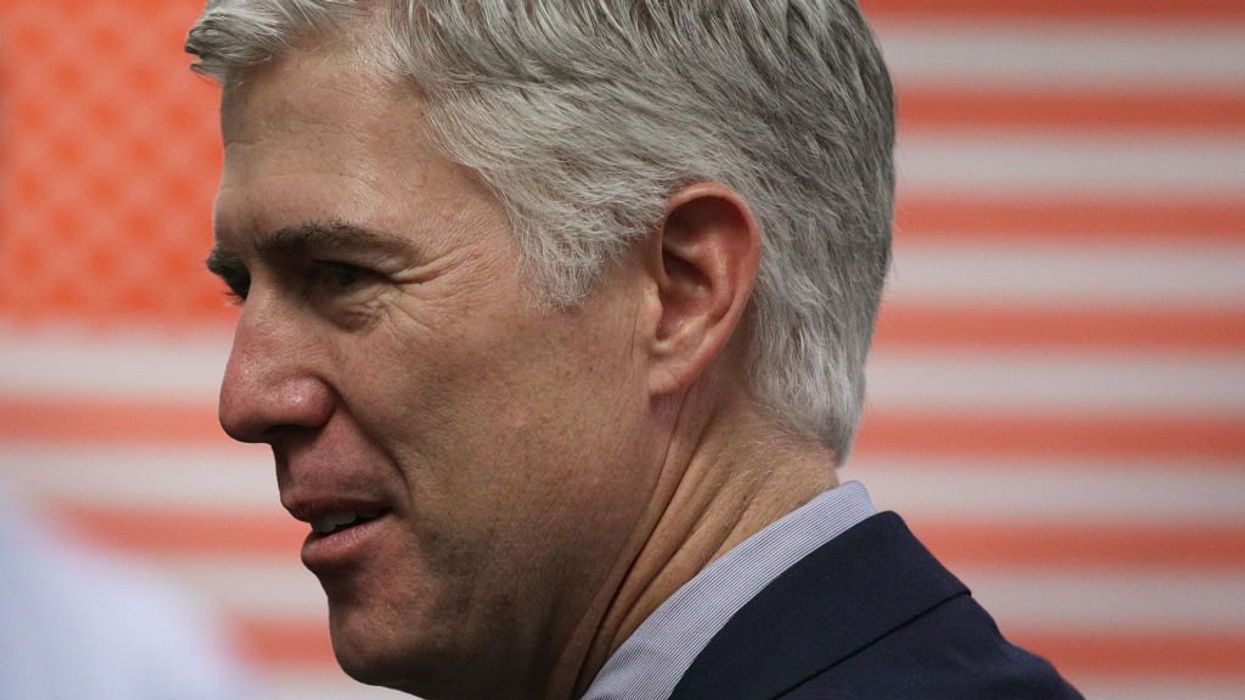
© 2024 Blaze Media LLC. All rights reserved.
"Even France is getting it right."
It's clean and powerful, efficient and reliable. So why have we been taught to fear nuclear power?
In a special feature for the May issue of TheBlaze magazine, TheBlaze TV producer Natasha Pascetta examines the great potential nuclear energy holds for the future of mankind, the nonsense of the green movement that fear-mongers everything nuke-related, the best way forward for energy production, and--believe it or not--Walt Disney's huge push to get America to fall in love with atomic power.
Every issue of TheBlaze Magazine contains exclusive content not found anywhere else--online or in print. The magazine’s stories, research and special reports are reserved for subscribers to the print and/or digital edition.
Below is an excerpt from the May 2014 special feature, "Our Favorite Villain." The full story is available ONLY in the newest issue of TheBlaze Magazine.
If you sign up today, you'll get the digital version of this issue absolutely free.
Ted Turner ruined my childhood.
In 1990, Turner created a Saturday morning cartoon that made me afraid that everything I did hurt Mother Earth. That show, “Captain Planet and the Planeteers,” was pure eco-propaganda. The general storyline was a 6-year-old Al Gore’s dream. Five kids are summoned by “Gaia” (voiced by Whoopi Goldberg for the first three years) to fight against big corporations and their devastating Earth-killing activities. When the battle is too much for the kids to take, they can pool their powers (Earth, Wind, Fire, Water, Heart) together and summon “Captain Planet” who, of course, saves the world from the brink of utter environmental disaster.
Captain Planet’s most menacing nemesis was a character named “Duke Nukem”—a mutated giant glowing block of yellow yuck. The toxic terror’s goal was to turn Earth into one big radioactive zone, and he introduced himself as the “Radiation king, at your service. The ignorants call me a mutant, I prefer to think of myself as the future of mankind!”
A nuclear-power-themed eco-villain the future of mankind? In the early ’90s, that just seemed ridiculous. Everyone knew Duke Nukem was a bad guy and, therefore, by association, so was nuclear power.
****Click here to subscribe and get a FREE issue today****
I had nightmares of Duke setting off nuclear reactors in my bedroom, mutating my teddy bears into gruesome fluffy piles of goo. But Duke Nukem was hardly the first character to embody the fear of nuclear power.
A year before “Captain Planet and the Planeteers” promoted childhood eco-terrorism, “The Simpsons” introduced us to Charles Montgomery Burns, Homer Simpson’s excellently evil boss and owner of the Springfield Nuclear Power plant.
In the early ’80s, DC comics introduced a cunning adversary for Superman called “Neutron.” A former security guard at a nuclear power plant, Neutron had the misfortune of being caught in a meltdown, turning his body into nuclear energy contained in a special suit. When battling Superman, Neutron could also call for help from members of the supervillain Nuclear Legion: Professor Radium, Geiger, Nuclear, Mister Nitro and Reactron.
In 1962, “Dr. No” permanently etched two distinct images in our culture forever: Ursula Andress’ white bikini and hidden island nuclear power facilities used for world domination.
We love to hate nuclear power.
We perceive nuclear energy as something to be feared, something uncontrollable, something evil that must be combatted with our most moral (and make-believe) do-gooders. That perception is so embedded in our culture that it trumps all fact about the energy source.
When people think of nuclear power, disastrous images are conjured up—the rotting Ferris wheel near Chernobyl, Jane Fonda protesting Three Mile Island, and little Japanese children trying to enjoy life with medical masks on.
Most people do not think sunshine, rainbows and lollipops when they think nuclear power.
[…]
What about Japan’s Fukushima? It has been three years since the Fukushima disaster, and no one has died as a result of radiation exposure. According to the United Nations Scientific Committee on the Effect of Atomic Radiation, “Radiation exposure following the nuclear accident at Fukushima-Daiichi did not cause any immediate health effects. It is unlikely to be able to attribute any health effects in the future among the general public and the vast majority of workers.”
****Click here to subscribe and get a FREE issue today****
But that declaration won’t stop Greenpeace from printing posters with nuclear skulls on them saying “Save the children of Fukushima!”
[…]
Why such anti-Fukushima hate from Greenpeace? Because they don’t want to admit that they have been vilifying the very energy source that can accommodate our growing energy needs in a completely renewable and green way.
Nuclear power is the most viable green energy source available to us at the moment. According to the EPA’s “Clean Energy” site, “nuclear power plants do not emit carbon dioxide, sulfur dioxide, or nitrogen oxides.”
If Greenpeace truly cared about actual deaths that can be linked directly to energy production, they would be more concerned about the 5,000 coal-mining deaths that occur worldwide each year instead of the zero deaths caused by nuclear radiation accidents in the United States. Nuclear power could help bring those fatal coal statistics around the world down.
Most Americans would likely be surprised to learn there are currently 65 commercially operating nuclear power plants with 104 nuclear reactors in America accounting for 20 percent of U.S. electricity since 1990.
Solar, geothermal and wind power just aren’t growing at a pace to be a realistic competitor to coal. Wind accounted for 4.1 percent, geothermal 0.4 percent and solar power a paltry 0.2 percent of total electricity generation in the United States in 2013. None of these came close to coal’s 39.1 percent share of U.S. electricity.
Even France is getting it right: The country has …
*****************************
 Want the answers to our energy woes? Get the whole story on nuclear energy and much more in TheBlaze Magazine.
Want the answers to our energy woes? Get the whole story on nuclear energy and much more in TheBlaze Magazine.
Natasha details what France and much of Europe is figuring out, why it's working and what the truth is about Three Mile Island and Chernobyl. She also offers a look at Walt Disney's writings, videos, exhibits touting the greatness of nuclear energy. It's all in the May issue of TheBlaze magazine—which you can get for FREE.
Click here to get a FREE digital version today!
--
Follow Chris Field (@ChrisMField) on Twitter
Want to leave a tip?
We answer to you. Help keep our content free of advertisers and big tech censorship by leaving a tip today.
Want to join the conversation?
Already a subscriber?
Chris Field
Chris Field is the former Deputy Managing Editor of TheBlaze.
more stories
Sign up for the Blaze newsletter
By signing up, you agree to our Privacy Policy and Terms of Use, and agree to receive content that may sometimes include advertisements. You may opt out at any time.
© 2024 Blaze Media LLC. All rights reserved.
Get the stories that matter most delivered directly to your inbox.
By signing up, you agree to our Privacy Policy and Terms of Use, and agree to receive content that may sometimes include advertisements. You may opt out at any time.




